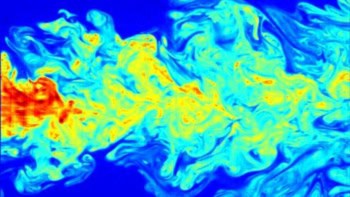
Ants are particularly good at avoiding traffic jams and can move about their business even when they occupy more than 80% of the available space – twice the value that stymies human pedestrians or drivers. According to experiments performed by a team of researchers in France, the US and Australia, ant movement is best described by a two-phase flow function that is very different from existing statistical models of traffic engineering.
The work could be important for studying systems that contain large groups of interacting particles, such as those in molecular biology and statistical physics. It might even have implications for programming self-driving vehicles so that they work together cooperatively, like ants.
Led by Audrey Dussutour of CNRS and Toulouse University, together with colleagues at Arizona State University and the University of Adelaide, the scientists studied the behaviour of European Argentine ants (Linepithema humile). This highly invasive species can form “supercolonies” containing several billion individuals and is the largest recorded society of multicellular organisms. Their experimental testbed consisted of a nest and a food source, connected by a 17-cm-long bridge with varying widths of 5, 10 or 20 mm.
35 nests and 170 experiments
In a programme of research that spanned 35 ant nests and 170 experiments, Dussutour and colleagues varied the ants’ density (as measured in ants per unit surface area) by populating testbeds with between 400 and 25600 ants, and filmed the results as the ants travelled from the nest to the food source. The researchers plotted the flow of ants q heading in two directions across the bridge – towards the food source and away from it – as a function of ant density k. They then analyzed the relationship between q and k and fitted their data to traffic engineering models.
The team found that although all the models performed well overall, none of them predicted the behaviour of the ants at intermediate and high densities. The researchers therefore introduced a two-phase flow function, in which flow first increases linearly as the density of ants increases, then reaches a plateau and remains constant thereafter. This function better described the behaviour of the ants, and it is very different to the pattern seen in humans, where slowing flows of traffic eventually lead to jams.

Sounding out swarms
Traffic flow does not slow down for ants
The team say the ants appear to be adjusting their behaviour to their circumstances. For example, the researchers observed that the insects increase their speed at intermediate densities to avoid congestion. Ants also refrain from joining the flow of traffic at high densities (of 18 ants/cm2), preferring to wait until it has thinned out. In both cases, jams are avoided and there is a steady, uninterrupted flow of traffic.
Ants’ self-regulating behaviour ensures that they forage for food efficiently, Dussutour and co-workers say. It is very different to the external rules applied to car traffic, such as stopping at red lights regardless of whether traffic flow is dense or not. Ants, it seems, establish such rules without the help of traffic control systems.
The research is detailed in eLife.



